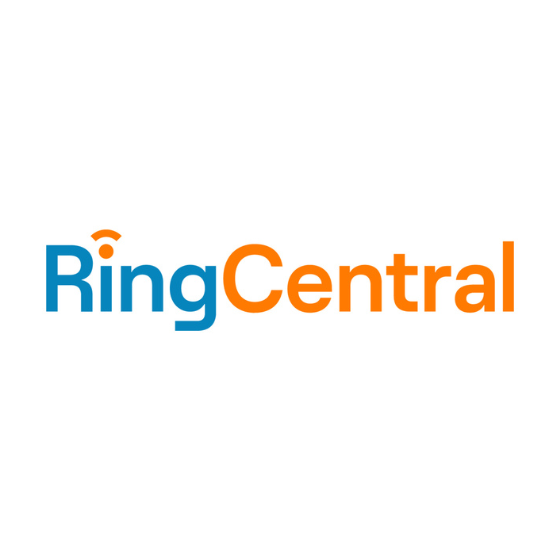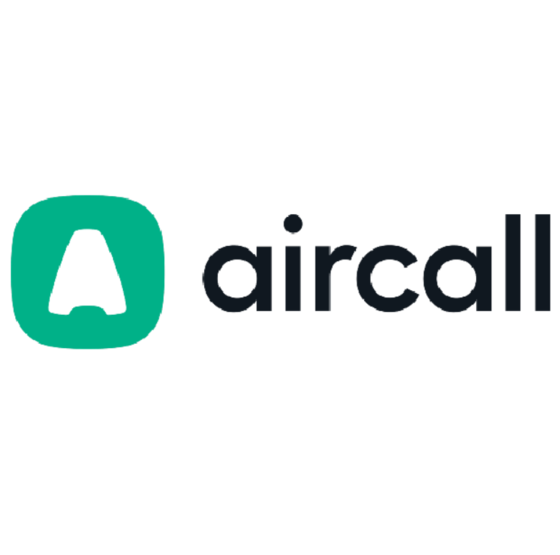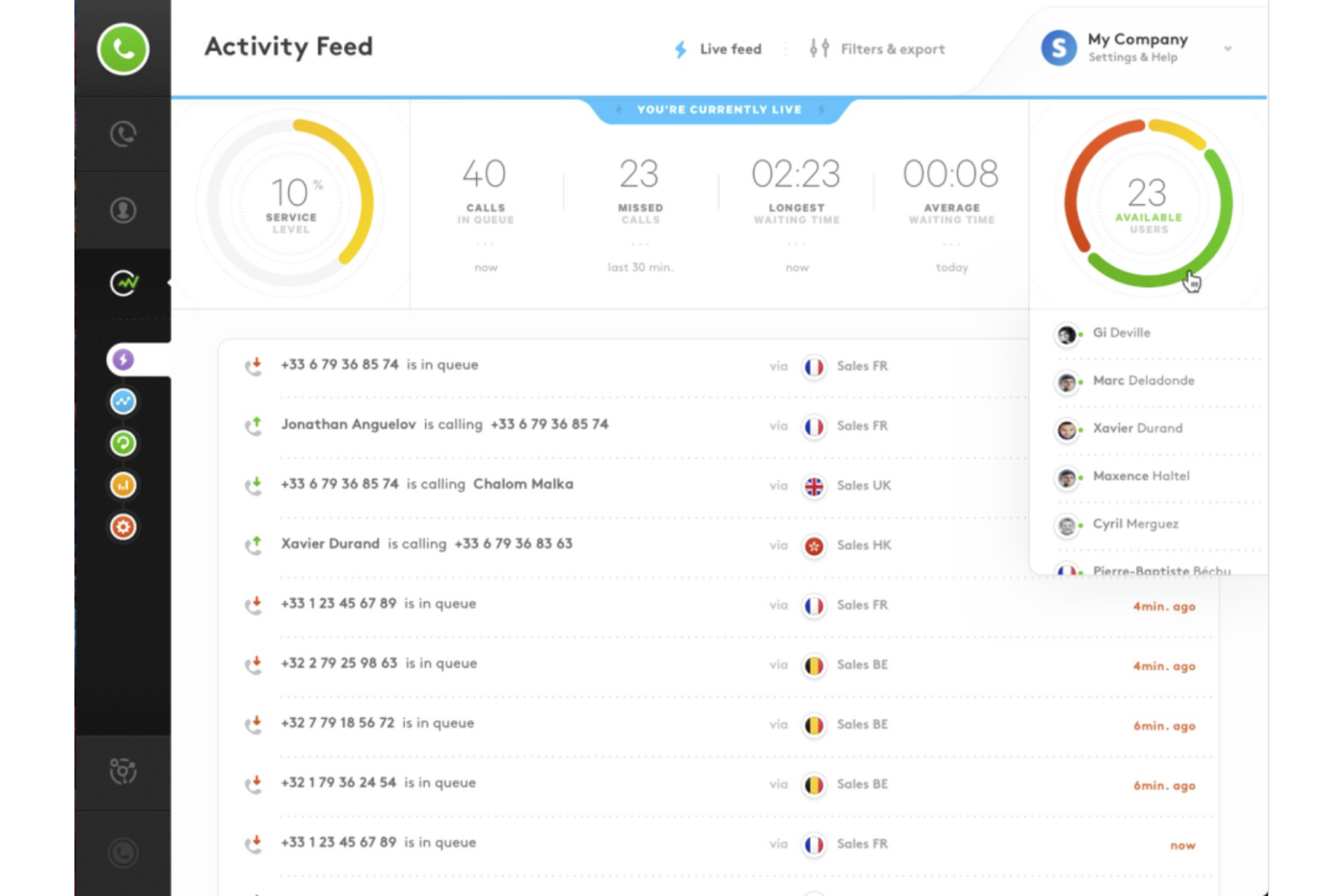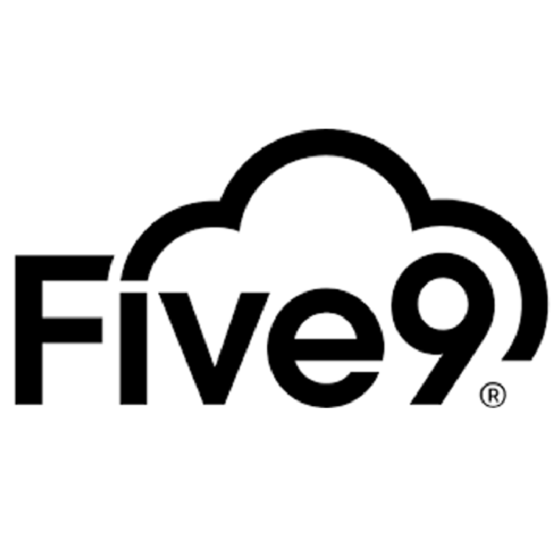10 Best Call Queue Software Shortlist
Here's my pick of the 10 best software from the 20 tools reviewed.
With so many different call queue software solutions available, figuring out which is right for your business is tough. You know you want software to help you manage incoming calls efficiently and route them to the best possible agent, but you need to figure out which system is best. In this article, I'll help you make your choice easier by sharing my insights on the best call queue software to manage high call volumes and ensure a positive customer experience.
What is Call Queue Software?
Call queue software is a tool that customer service teams use to answer incoming calls and route them to the appropriate agent within your organization who can handle issues or answer questions. The way the call is routed will usually depend on selections the caller makes in a menu during their first contact. In addition to call routing, they also include features such as call recording, interactive voice response, call metrics, and wait time management tools to inform callers of expected wait times to reduce customer frustration.
Call queue software can help your team handle incoming calls more efficiently and can reduce wait times for your customers by allocating calls to agents based on availability and skills. They also offer data insights to support better resource management, with the ability to adapt to scaling business needs as call volumes increase.
Overviews of the 10 Best Call Queue Software
You can use the simple overviews of each tool below to understand how each tool stands out from other call queue software.
RingCentral Contact Center helps customer service managers and other leadership teams track reps’ performance with live analytics and historical reports.
Why I picked RingCentral Contact Center: You can use RingCentral Contact Center to gain valuable insights on your team’s performance with insights into average handle time and call queue time. The platform enables businesses to create custom reports by using one of the over 250 out-of-the-box metrics that you can filter and schedule to meet your requirements. There’s also a real-time, customizable dashboard within the RingCentral Contact Center platform that will help you monitor representative performance and customer experience.
RingCentral Contact Center helps businesses of all sizes ensure their customers receive helpful and immediate service on any communication channel. The platform can help you optimize efficiencies via intelligent voice response and self-service options. RingCentral Contact Center’s industry-leading tools will ensure customers connect with your business quickly and reach the person who can handle their needs.
RingCentral Contact Center Standout Features and Integrations
Features include interactive voice response, campaign management, escalation management, reporting and analytics, call recording, call logging, and inbound call center capabilities.
Integrations include Freshdesk, Supportbench, Shape Software, Pipedrive, New Relic, Oracle NetSuite, Envoy, 1CRM, VipeCloud, Zendesk, Salesforce, Mailchimp, Slack, HubSpot CRM, Zoho CRM, and Zapier.
Pros and cons
Pros:
- Excellent call review capabilities
- Very easy to use
- Simple user interface
Cons:
- Call quality needs improvement
- Some integrations aren’t efficient
Talkdesk helps businesses route overflow calls to another phone number when all team members are busy to ensure they meet all customers’ needs.
Why I picked Talkdesk: The platform’s call center overflow capabilities ensure that customers in your call queue will receive the support they need. Talkdesk will allow your business to take the necessary measures to handle an overflow in your call queue by routing calls to a backup department or team. This ensures that your customers are taken care of when your team members are busy so you don’t disappoint them.
Talkdesk helps businesses searching for an automation-first customer experience solution that will optimize their customer service processes. Your team leaders and representatives can use Talkdesk to make crucial data-driven decisions through its call recording, call monitoring, and real-time reporting insights. The system will display the information your customer support reps need, such as the caller’s name, contact details, and purchase history, to ensure your teams can personalize their conversations.
Talkdesk Standout Features and Integrations
Features include omnichannel engagement, employee collaboration tools, customer experience analytics, workforce engagement management, self-service experience, flexible deployment, and an AI platform.
Integrations include Salesforce, Olark, LiveChat, Nimble, Intercom, Microsoft Dynamics 365, Help Scout, Highrise, Front, Freshdesk, Contactually, BigCommerce, Zendesk, Pipedrive, Slack, and Outreach.
Pros and cons
Pros:
- Straightforward to use
- Simple user interface
- Easy to monitor inbound calls
Cons:
- It has a few bugs
- Slow to load
Aircall is a cloud-based phone system that enables businesses to make and receive calls and customize the call queue experience.
Why I picked Aircall: Aircall is a popular virtual call center solution that enables your business to customize call queues with tailored messages, on-hold music, or by giving customers the option to ask for a callback. Aircall’s call queue features will help your business keep up with large call numbers and provide the best customer experience. These features include choosing how long you want calls to stay in the queue before they’re directed to your voicemail and ensuring the customer’s call goes to the right employee via intelligent call routing.
Aircall is an ideal option for small and medium businesses that need call center software that will allow them to make the call queue experience pleasant for customers. The platform can make your call queue tolerable by letting inbound callers know what they can expect while waiting to speak with your reps and agents. Aircall’s call queue system will provide your customers with an exact number of minutes remaining before your team members will attend to the call, allowing the customer to handle other tasks while holding their place in your queue.
Aircall Standout Features and Integrations
Features include real-time modifications, call queues, ring groups, parallel calls, queue callback, unlimited concurrent calls, time-based routing, call recording, pause-resume recording, and a real-time activity feed.
Integrations include monday.com, Zendesk, HubSpot, Pipedrive, Intercom, Salesforce, Hiver, ActiveCampaign, Odoo CRM, Zoho CRM, Zapier, Copper, eDesk, Microsoft Dynamics, and Integrately.
Aircall costs from $40/user/month for a minimum of three users. Aircall offers a free 7-day trial for new subscribers.
Pros and cons
Pros:
- Provides deep, real-time analytics
- Accessible on desktop and mobile
- Improves overall communications and efficiency
Cons:
- Could use better call history analytics
- Customer support needs improvement
Freshdesk Contact Center (formerly Freshcaller) provides queue management solutions that won’t frustrate customers.
Why I picked Freshdesk Contact Center: With Freshdesk Contact Center, you can develop special call queues for each team in your organization. Freshdesk Contact Center’s call queues will work together with an interactive voice recognition menu that will work to ensure your customers are sent to the right team in your company. You can use the platform to create queue-based routing rules for your teams. You can also create fallback options for any scenario and quickly send customers from one call queue to another.
Freshdesk Contact Center works well for businesses that need a platform that will enable them to affordably connect with customers. You can use Freshdesk Contact Center to ensure call queues improve customers’ experiences across your organization. It also uses real-time data to make it easier for you and your leadership teams to evaluate performance.
Freshdesk Contact Center Standout Features and Integrations
Features include call queue management, contact importing, automated call distribution, voice bots, call routing automation, real-time call center dashboard, live call monitoring, call barging, call recording, and service level monitoring.
Integrations include FrontApp, Zoho CRM, Infusionsoft, Copper CRM, Pipedrive, PipelineDeals CRM, Agile CRM, Nimble CRM, Zendesk Sell, Salesforce, HubSpot CRM, Zapier, WooCommerce, and Shopify.
Freshdesk Contact Center costs from $18/user/month plus $0.13/minute. Freshdesk Contact Center offers a free 21-day trial for new subscribers and a free forever subscription tier with limited features.
Pros and cons
Pros:
- Excellent user interface
- Easy to implement and use
- Simple to navigate
Cons:
- Pricing can add up quickly
- Technical support isn’t up to par
Five9 helps businesses visualize and create automated workflows, including call queues, that enhance customers’ experiences.
Why I picked Five9: You can use Five9’s workflow automation capabilities to create exceptional experiences for your customers. The platform’s workflow automation feature enables your business to act on customer data when they’re in your call queues and automate their experience. Creating automated workflows within the Five9 platform to react efficiently to your call queue and deliver consistent outcomes.
Five9 is an excellent option for medium and large-sized businesses that need a reliable call queue software solution. It’s a cloud-based option that’s feature-rich and enables your teams to manage customers’ lifecycles. Five9 provides practical AI capabilities that will increase your reps’ effectiveness and create excellent customer experiences, regardless of the communication channels your customers use.
Five9 Standout Features and Integrations
Features include artificial intelligence, reporting and analytics, interaction analytics, performance management, quality management, workforce optimization, workflow automation, intelligent virtual agents, and sentiment analysis.
Integrations include Salesforce, ServiceNow, Zendesk, Freshdesk, LumenVox, Microsoft Dynamics 365, Gong.io, SugarCRM, ValidSoft, and MindTouch.
Pros and cons
Pros:
- Customizable reports
- Easy to learn and use
- User-friendly interactive voice response mapping
Cons:
- Some integrations are problematic
- The platform can be slow
8x8 Contact Center helps businesses deliver self-service that is personalized to their customers and enables them to get the information they need without agent involvement.
Why I picked 8x8 Contact Center: The platform’s intelligent customer assistant capabilities will help your business create effective first impressions via its personalized self-service features. 8x8 Contact Center provides an intelligent customer assistant tool that instantly accesses engaging conversations through a bi-directional sync with your CRM system. This allows your teams to focus on more valuable tasks because the software’s conversational AI will deliver human-like interactions for simple, high-level engagement.
8x8 Contact Center is designed to help businesses of any size provide an excellent customer experience. The software’s customizability ensures your call queue will meet the needs of all your departments. The queue optimization capabilities make it relatively simple to establish 24/7 availability, even if you’re operating a phone-heavy consumer business.
8x8 Contact Center Standout Features and Integrations
Features include interactive voice response, omnichannel routing, virtual agents, customer experience analytics, contact center analytics, quality management, call recording, multi-level auto attendant, call handling, voicemail transcription, and call queues.
Integrations include Microsoft Teams, Salesforce, Google Workspace, 1CRM, Copper, Freshdesk, HubSpot, Microsoft Dynamics 365, Pipedrive, Zendesk, Zoho, Okta, Slack, and SugarCRM.
8x8 Contact Center costs from $85/user/month. 8x8 Contact Center offers a free demo to help you understand whether the platform is right for you.
Pros and cons
Pros:
- Excellent call routing
- Easy to use
- Unifies operational systems quickly
Cons:
- Configuration has a learning curve
- Finding recorded calls is complex
Twilio Flex provides call centers with an infinitely flexible and immediately deployable cloud-based platform.
Why I picked Twilio Flex: You can use Twilio Flex to develop a custom solution that meets your exact call queue needs. The Studio feature within Twilio Flex allows you to plan call queues and what happens throughout interactions with a visual workflow builder. With Studio, you can quickly create and modify workflow and call routing rules in a serverless environment. You can also build call flow prototypes, and if it proves to be more efficient, you can iterate them to go live immediately.
Twilio Flex works well for businesses of any size that prefer to build a custom call center to ensure it meets their needs. The platform is capable of developing reports on what you want to see by creating custom data dashboards. Every day, you can use Twilio Flex to monitor call queues to help you balance your customer support staff’s availability.
Twilio Flex Standout Features and Integrations
Features include customer experience management, reporting and analytics, interaction tracking, on-demand recording, quality management, employee coaching tools, archiving and retention, multi-channel communication, and real-time chat.
Integrations include Salesforce, Zendesk, Calabrio, HubSpot CRM, Discord, Gravity CX, Kaptea, Mindful, Puzzel WFM, Sabio, Scout, Spoke Phone, and Verint.
Pros and cons
Pros:
- Very simple user interface
- Easy to visualize hold times
- Excellent omnichannel support
Cons:
- Customization needs a developer expert
- Reports can be complex
Genesys Cloud helps businesses simplify customer journeys with voice bot assistants that handle interactions.
Why I picked Genesys Cloud: You can use the voice bot assistance capabilities within Genesys Cloud to manage, unify, and orchestrate your bots across multiple interaction channels. Genesys Cloud’s voice bots will answer calls with zero delays 24/7. When customers enter your call queue, you can lessen hold times by making your contact center more accessible with the software’s automated virtual agents. In the event that a customer wants to speak with a human, the voice bot will pass the customer, along with all relevant details, to your team for a straightforward experience.
Genesys Cloud is suitable for businesses of any size and in any industry searching for a solution that will improve services. The tool is capable of handling incoming calls and provides your teams with standard call centers technologies such as interactive voice response and intelligent call routing. Genesys Cloud is a composable platform, meaning you can arrange and rearrange your system to meet customers’ requirements and scale when necessary.
Genesys Standout Features and Integrations
Features include speech-enabled interactive voice response, chatbots, natural language understanding, inbound voice routing, voicemail, callback scheduling, predictive routing, employee performance, resource management, and quality assurance.
Integrations include Salesforce, Freshdesk, Zendesk, Zoho CRM, Microsoft Dynamics 365, Salesloft, SugarCRM, Bitbucket, OneLogin, Trello, Okta, and Brightmetrics.
Pros and cons
Pros:
- Effective performance views
- Reporting dashboards are easy to use
- Agents can work from anywhere
Cons:
- Change history is complex
- The user interface needs work
Cisco Unified Contact Center Express provides enhanced workforce optimization tools that equip team leads to ensure everyone delivers exceptional experiences.
Why I picked Cisco Unified Contact Center Express: To help your supervisors provide efficient, effective service that focuses on your customers, Cisco Unified Contact Center Express provides the data and tools they need to manage their team’s performance. The tool’s workforce analytics capabilities provide data-driven insights from speech and desktop action analysis that will help improve experiences. Cisco Unified Contact Center Express also provides call quality management tools that increase call queue resolutions and team productivity.
Cisco Unified Contact Center Express is an excellent fit for call centers and enterprises that need a solution to improve team productivity. The platform will provide your business with a flexible and agile system that simplifies customer segmentation and resource activity monitoring. Your teams can use the software to engage with customers across multiple contact channels from a single source.
Cisco Unified Contact Center Express Standout Features and Integrations
Features include customizable tools and applications, customer experience insights, omnichannel communications, performance insights, and software licensing.
Integrations include Variphy, Google Cloud Agent Assist, 2Ring, Yellow.ai, Webex Workforce Optimization, and an API that allows businesses to create custom connections.
Pros and cons
Pros:
- Affordable call routing and queues
- Efficient for daily use
- A well-documented solution
Cons:
- Limited native system integrations
- Challenging to manage
Avaya Experience Platform helps customer support representatives, and customers discover a faster path to resolve issues with AI speech analytics.
Why I picked Avaya Experience Platform: The software will help everyone involved in a call get on the same page, thanks to Avaya Experience Platform’s artificial intelligence speech analytics. You can use the tool’s real-time customer data and AI-powered guidance to eliminate guesswork. The AI within the Avaya Experience Platform will help your teams anticipate what’s next within your call queue and fine-tune conversations.
Avaya Experience Platform offers businesses the tools to manage interactions from their call queues, especially for mid-sized companies and large enterprises. The software helps your teams deliver personalized customer experiences through data integration, smart call routing, and resource selection capabilities. Regardless of where your teams are located, Avaya Experience Platform helps route calls from your call queues to the best agent based on customer value, skill level, and business campaigns.
Avaya Experience Platform Standout Features and Integrations
Features include artificial intelligence, AI noise removal, real-time customer data, automatic call recording, live interaction monitoring, performance management, intelligent call routing, customer self-service options, and AI-powered guidance.
Integrations include Dynamics Telephony, Empirix, Video RTC, Daisee, Sapling AI Writing Assistant, IBM Watson Assistant, Google Cloud Agent Assist, Mindful, Yellow.ai, and Nectar DXP.
Pros and cons
Pros:
- Integrates directly into desktop computers
- Easy to use
- Provides a straightforward experience
Cons:
- Takes time to integrate with third-party apps
- It’s not very scalable
The Best Call Queue Software Summary
| Tools | Price | |
|---|---|---|
| RingCentral Contact Center | From $24.99/user/month | Website |
| Talkdesk | From $75/user/month | Website |
| Aircall | From $30/user/month (billed annually) | Website |
| Freshdesk Contact Center | From $18/user/month | Website |
| Five9 | From $149/month; Custom plans are also available | Website |
| 8x8 Contact Center | From $85/user/month | Website |
| Twilio Flex | From $150/user/month | Website |
| Genesys Cloud CX | From $75/user/month | Website |
| Cisco Unified Contact Center Express | Pricing upon request | Website |
| Avaya Experience Platform | Pricing upon request | Website |
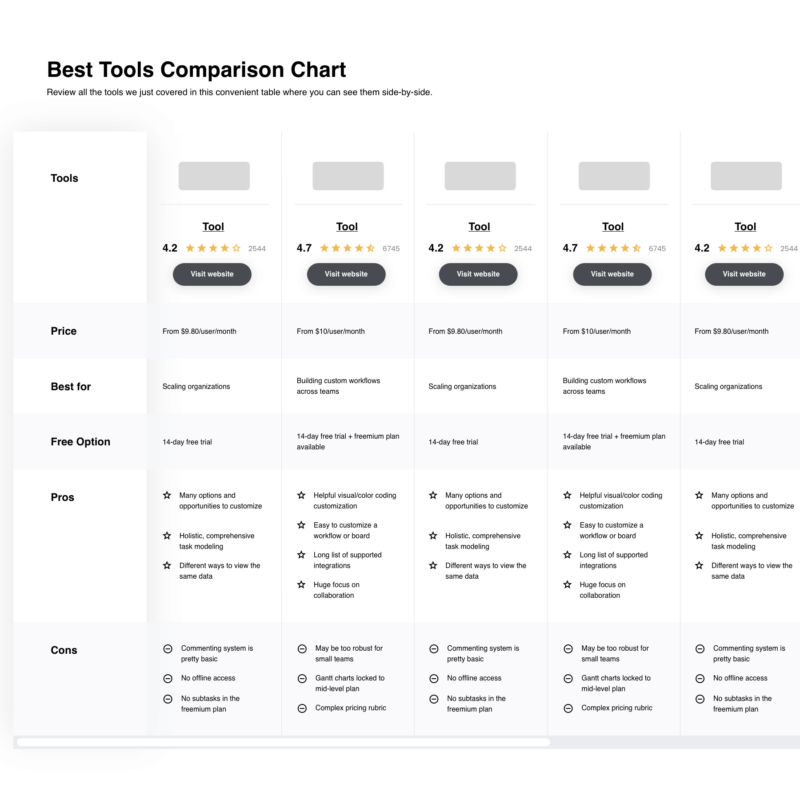
Compare Software Specs Side by Side
Use our comparison chart to review and evaluate software specs side-by-side.
Compare SoftwareOther Options
Here are a few more options that didn’t make the best call queue software list:
- NICE CXone
Best for journey orchestration
- Zendesk Talk
Best for intelligent routing
- Zoho Desk
Best for centralizing customer communications.
- Salesforce Service Cloud
Best for complete customer visibility.
- Q-flow
Best for rule-based customer queuing.
- Voximplant
Best for embedding audio communications in a contact center app.
- Enghouse Interactive
Best for streamlining call center operations.
- Aspect Unified IP Contact Center
Best for
- Mitel MiCloud Connect Contact Center
Best for team collaboration.
- QueueMetrics-Live
Best for creating real-time data dashboards.
How I Selected the Best Call Queue Software
Perhaps you're wondering how I selected the best call queue software for this list? To build this top 10 list, I evaluated and compared a wide range of call queue software with positive user ratings.
After determining my long list of top choices, I further honed my list by using the selection criteria below to see how each platform stacked up against the next one. I also drew on my years of CX experience to pinpoint the features that add a lot of value.
If you have general questions about call queue strategy or how to pick the best call queue software for your organization, take a look at our frequently asked questions section below. Or, you can skip directly to my detailed software summaries, if that's what you need the most.
Selection Criteria
Here’s a short summary of the main selection and evaluation criteria I used to develop my list of the best call queue software for this article:
Usability:
High-quality call queue software should be easy for your teams to use so they can provide efficient customer service. The last thing you want is to discover that the call queue tool that looks like the perfect choice is difficult to use. I look for solutions so that your teams can become proficient in navigating the tool in a few hours.
Customer Service:
Things can go wrong when using new software, especially when you’re starting out with something brand new. When this happens, you should know whether the vendor providing your call queue software will be there to resolve any issues. I look for call queue software that has good reviews about the vendor’s customer service, specifically focusing on reviews that discuss how the customer service team sticks by the customers’ side through thick and thin.
Software Integrations:
Your call queue software isn’t going to be a stand-alone system - it needs to interact with other aspects of your call center. The last thing you want to experience is a disconnect that causes a drop in productivity. I look for platforms that can connect with other vital business systems that you’re likely already using.
Pricing:
The final price you’ll pay for the call queue software of your choice will be essential. Some vendors require set-up fees in addition to monthly charges. Also, the vendor might offer multiple pricing options based on certain factors. For example, a call queue solution can be a pay-as-you-go tool, or you might have the choice of different subscription tiers that differ depending on the features you get. I look for software vendors that provide a clear understanding of the final price to ensure everyone is on the same page.
People Also Ask
Here are a few popular questions answered for your convenience!
How does a call queue work?
When a call comes in, the call queue software places it into a line where it waits until an active call is complete. If you have multiple employees in a team, you can decide whether the call queue software you’re using calls all numbers sequentially, simultaneously, or on a rotating basis.
Sequential selection distributes calls in a specific order or by using skills-based routing to the agent with the best expertise to answer the call. Simultaneous selection distributes customers’ calls one at a time to available employees, and the call rings until an agent answers or the maximum wait time expires. Rotating routing concurrently distributes calls to the least busy team member.
When one of your agents is available to handle the call, it’s put through according to the software’s call queue management protocol. Customers that are waiting in the queue will hear an opening message that greets them and then either music or another audio file, depending on what you select.
Need help with physical queueing? Take a look at our list of the best customer flow management software instead.
Why is having a call queue important?
Call queue software is important because it can help your business manage the enormous number of customer calls it receives daily. Many people still prefer to interact with a business over the phone even though they also have access to an organization via social media, email, and live chat. As a matter of fact, 42% of people will contact a business over the phone at least once a week, and 65% of people prefer to interact with a company by calling them on the phone.
Providing an excellent customer experience is crucial to your business’s survival. However, even your best employees and customer support reps will fail if you’re not implementing good call queue software.
What are the key features of call queue software?
Call queues are a vital function of any cloud contact center’s operations, enabling your teams to handle incoming calls efficiently. Organizations can have different purposes for implementing call queue software, but it’s common for businesses to use these platforms to route incoming calls. Despite these varying reasons, there are some key features you should find during your search:
- Queue Management: Your business can set up a call queue platform to manage multiple calls simultaneously, allowing calls to go to the proper department fast with fewer wait times.
- Custom Queues: The software you implement should enable your business to customize queues by choosing from various music options or pre-recorded messages for callers while they wait.
- Queue Transfers: When an employee answers a call and discovers the caller would have a better experience being served by another team member, the queue transfer feature enables them to transfer the call to another queue.
- Queue Status Indicators: Your employees can use the queue status indicator feature to monitor how many calls are waiting along with their estimated wait times.
- Callback Capability: A call queue platform should allow employees to contact customers that couldn’t reach an agent or representative, enabling your teams to follow up with questions or concerns.
- Voicemail Option: This feature will give your customers the option to leave voicemail messages if they choose not to wait in a call queue, allowing your customer to decide how long they’re willing to wait.
- Voicemail Transcriptions: This technology will type out the voicemail a customer leaves in your inbox and allow team members to quickly read their concerns before following up with them.
- Automated Attendant: Your call queue software should provide ways to greet customers with options when they call your organization so they can find what they need.
- Call Recording and Analytics: This feature provides team managers and other leading stakeholders with metrics, such as wait times and call length, to help them improve performance and enhance customer experiences.
- Busy Call Handling: Your teams can use the busy call handling feature to automatically route incoming calls to other available agents or representatives.
- Call Scripts: Some call center tools have space to design and store call scripts to guide your agents through a standard customer query.
What other call software should I use?
Relying on one or two platforms to operate your call center can be stressful for employees. Using multiple tools for various aspects of your call center can help increase productivity and ensure customers get the best possible experience. Here are some other call platforms you should consider using for your organization.
Organizing Calls with Call Queue Software that Suits Your Business
Evaluating all of the call queue software options available for your organization can be overwhelming. Narrowing down your options can be as simple as choosing the platform that fits your business size and industry with the features you need. You should also consider comparing multiple options side-by-side to understand which is suitable for your requirements. Hopefully, this list does just that.
Investing in the right tools and learning the latest customer experience advice can significantly improve your company’s operations. If you need help getting the latest customer experience details, sign up for The CX Lead newsletter to discover the latest and greatest software recommendations and customer experience advice from the top leaders in this field.

